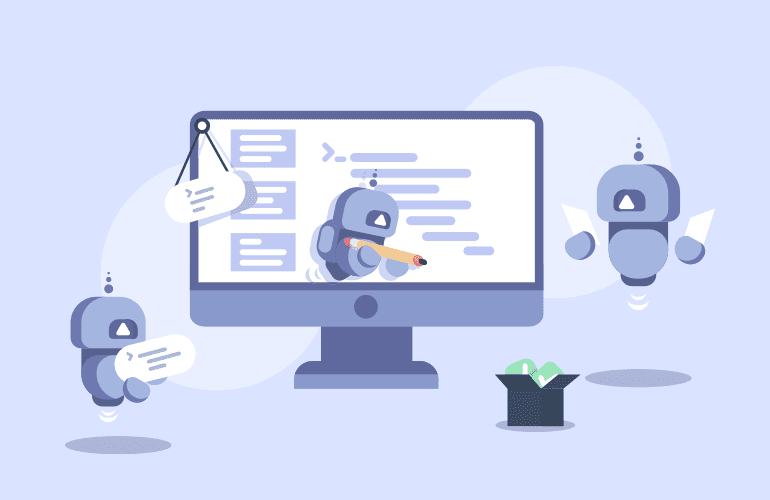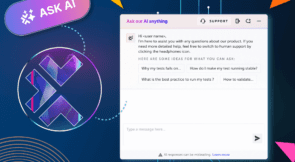The Software Development Lifecycle (SDLC) consists of various roles and processes that have to seamlessly mesh together, to release high-quality software. This holds true right from the initial planning phase, all the way to production release and monitoring. In terms of roles, we have designers, business analysts (BA), developers, testers, scrum masters, project managers, product owners (PO) and technical architects (TA), who bring a varying level of experience and skill set to the project. They collaborate to discuss and implement different aspects of the software. In terms of processes, based on team size, release schedules, availability of resources and complexity of the software, the amount of processes can vary from no process to strict quality gates, at different phases of the SDLC.
What is the Knowledge Gap?
As teams start to collaborate to work on different features of the software, they often run into the below situations-
- Each team member has different interpretations of the requirements
- A majority of the team finds it hard to understand the technical jargons used to describe the working of the system
- Developers assume the testers have the same level of technical expertise as them, while explaining changes in code during code reviews
- Developers fail to do development testing and assume testers will test the newly implemented feature completely
- There is no clear distinction of responsibilities in the team; leading to ambiguity and confusion
- The PO comes up with a feature to implement and each team member has different interpretations of how the feature should work
- The BA writes requirements that are hard to understand and implement, due to lack of understanding of the technical aspects of the system
- The TA explains how a feature should be implemented using technical jargons that are hard to understand by designers, PO’s, BA’s and testers
- The developer develops the feature without paying attention to the testability of the feature
- The tester sits in on code reviews and the developers assume he/she has the same level of technical expertise as them when explaining their implementation
- The tester does not get enough time to complete their testing due to tight release schedules
- The developer fails to do development testing and makes testers responsible for the quality of the product
- There is no clear distinction of responsibilities on who would do what task in the SDLC and everyone assumes someone would do the tasks. As a result; majority of them never gets done
And so on…
Now, you may ask? Why do teams get into the above situations more often than expected? The answer is, there is a knowledge gap in teams. This is especially true when teams have a mix of entry-level, mid-level and expert level resources and each one makes different assumptions on the skillset, experience and the domain knowledge every individual brings to the table.
Also, these gaps can stem from a more granular level when teams are using different tools as well. For example – When customers use Testim, we have observed first hand that, different developers/testers think and use our platform differently.
- Manual testers see Testim as a time saving tool that helps them quickly create and run stable tests, and as something that can help them in reducing the amount of manual effort it takes to test applications
- Automation Engineers see Testim as an integrated tool that helps them to do coded automated testing with the help of JavaScript and API testing in one single platform instead of using multiple tools for functional and API testing
- Developers see Testim as a quick feedback tool that helps them to run several UI tests quickly and get fast feedback on the application under test. They also recognize the ability to do more complex tests by interacting with databases and UI, all in one single platform
- Release Engineers see Testim as a tool that can be easily integrated in their CI/CD pipeline. They also recognize the ability to trigger specific tests on every code check in; to ensure the application is still working as expected
- Business and other stakeholders view Testim as a collaborative tool that can help them easily get involved in the automation process irrespective of their technical expertise. They also recognize the detailed reports they get from the test runs that eventually helps them to make go/no go decisions
As we can see, within the same team, people have different perceptions of tools that are being used within the project as well. These are good examples of knowledge gaps.
How do we identify knowledge gaps?
Identifying knowledge gaps in the the SDLC is critical not only to ensure the release of high quality software but also to sustain high levels of team morale, productivity, job satisfaction and the feeling of empowerment within teams. The following questions help to identify knowledge gaps-
- What are the common problems that occur in each phase of the SDLC?
- What processes are in place during the requirements, design, development, testing, acceptance and release phases of the SDLC?
- How often does a requirement change due to scope creep?
- How effective is the communication between different roles in the team?
- Are the responsibilities of each team member clearly identified?
- How visible is the status of the project at any instant of time?
- Do developers/testers have discussions on testability of the product?
- How often are release cycles pushed to accommodate for more development and testing?
- Are the teams aware of what kind of customers are going to use the product?
- Has there been lapses in productivity and team morale?
- Is the velocity of the team stable? How often does it fluctuate and by how much?
In terms of tools being used:
- How are teams using different tools within the project? Are they using tools the right way?
- Are all the resources sufficiently trained to use different tools within the project?
- Does one sub-group within a team have more problems in using a tool than others?
- How effective is a particular tool in saving time and effort to perform different tasks?
Answering these questions as a team helps to identify the knowledge gaps and helps in thinking about solutions to these problems.
How do we bridge the knowledge gap?
There are 5 main factors that help to bridge the knowledge gap in teams. They are as follows-
-
Training
Sufficient training needs to be given to designers, developers, testers, scrum masters, project managers to help them do their job better, in the context of the project and using different tools. Doing this will help designers understand how mockups need to be designed so that developers can effectively implement the feature, testers can attend code reviews without feeling intimidated and use tools more effectively with sufficient technical training, developers will understand why thinking about the testability of the feature being implemented is important and realize tools can help aid their development testing effort, the scrum master can better manage tasks in the project, project managers can ensure they help the team to collaboratively meet release schedules and deadlines and finally, stakeholders can get a high level overview of the project when they learn what reports are generated from different tools and how to comprehend them.
-
Visibility
If we want the teams to start seamlessly working together like a well oiled machine in an assembly plant; we need to make the results of everyone’s effort visible to the entire team. It is important for us to know how our contributions help in the overall goal of releasing a high quality product within the scheduled date. There are various way to increase visibility in teams such as,
- Checklists – where there is a list of items to be done in each phase of the SDLC, that helps everyone to be aware of the expectations from each one of them. This is especially helpful when the team consists of members of varying skill sets and experience. If the items in the list are marked as DONE, then there is no ambiguity in terms of what task has been completed
- Visual Dashboards – Another solution is having visual dashboards giving a high-level overview of the project health and status. This not only helps stakeholders but also individual contributing team members. These can be created on whiteboards, easel boards or software that is accessible to everyone. Everyday, during stand up meetings, the teams should make it a point to address the dashboard and ensure everyone is aware of the high-level project status. For example – In Testim, we provide a dashboard showing what percentage of test runs passed, number of active tests, average duration of tests, how many new tests were written, how many tests were updated, how many steps have changed, what are the most flaky tests in your test suite and all these details can be filtered based on the current day, 7 day or a 30 day period.
-
Clear definition of responsibilities
There needs to be clearly defined responsibilities in teams. Each one needs to know why he/she is in the team and what task they need to accomplish on a daily, weekly, monthly and a quarterly basis. Goals, objectives and expectations from each team member need to be clearly discussed with their respective peers/managers. This prevents a majority of the confusion that may occur in terms of task completion.
-
Empowering the team
In this day and age, where individuals are more technical and skilled, what they are lacking in is – getting some level of empowerment and autonomy. Contrary, to popular beliefs that there needs to be one leader for the whole project; the leadership responsibility should be divided within each role in the team. There needs to be one point of contact each from the design, development and testing teams. Each point of contact who also in most cases help to lead their respective sub-teams, meet up with other leads and ensure all the sub-teams within the project are on the same page and working towards the same goals and objectives. This way, the whole team is empowered.
-
Experimentation
Once the gaps are identified, the whole team needs to sit together (usually in retrospective meetings after sprints) to discuss different solutions to problems. Based on this, the team needs to experiment with different solutions and see what works well/doesn’t. This constant experimentation and feedback loop helps to make the team more creative and empowers them to come up with solutions that work for them.
In summary,
the “knowledge gap” has been one of the major obstacles for teams to reach their fullest potential. Identifying and reducing them, will help to increase efficiency and as a result lead to faster release cycles, with higher quality. Also, Testim can be used as one of the aids in this entire process. Sign up now, to know how it helps to increase collaboration and bridge the gap.



